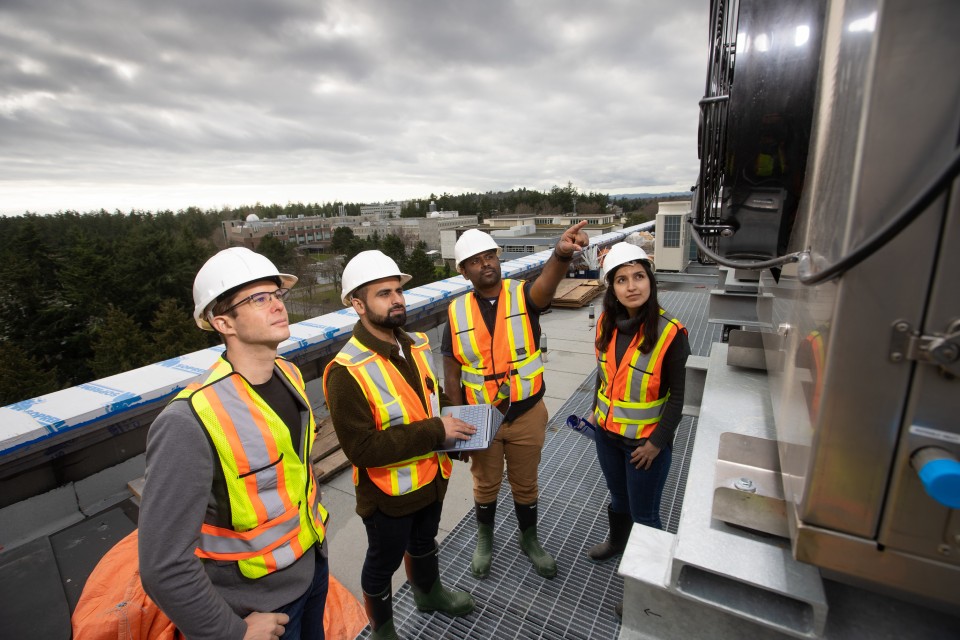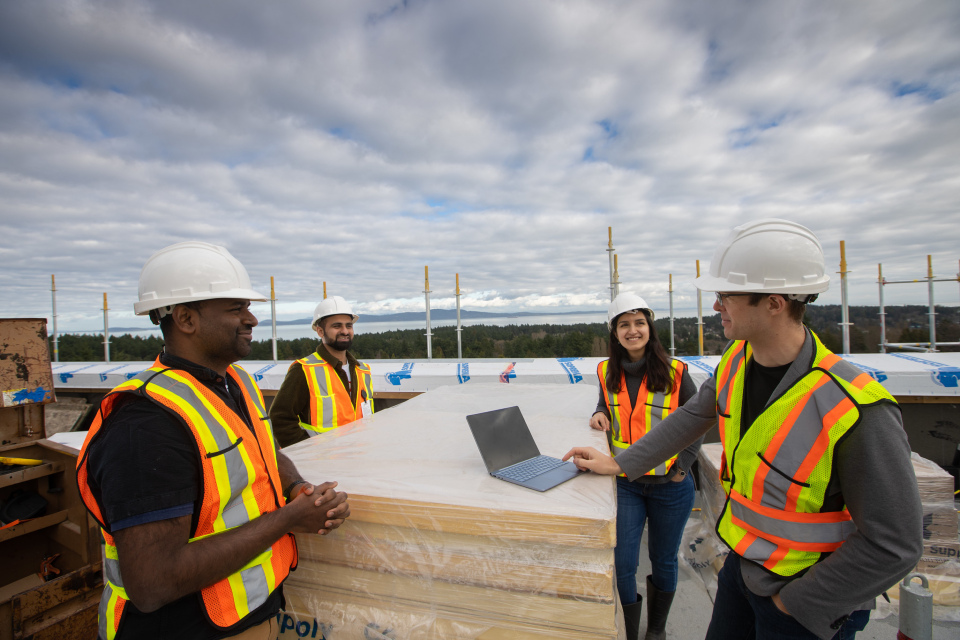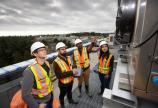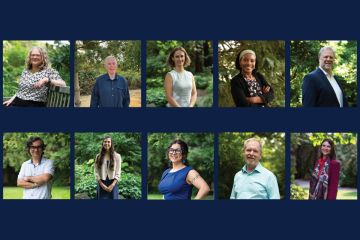ReBuild for a clean energy future
- Anne Tolson

University of Victoria researchers are playing a central role in a nascent industry that’s rushing to find effective, affordable ways to energy retrofit existing buildings and reduce harmful emissions.
In the global race to achieve net zero emissions, civil engineer Ralph Evins is leading a wide-ranging partnership of 16 organizations that will share information and develop solutions to help businesses, governments and homeowners. Their focus will be to improve existing buildings so that they’re more energy efficient, low-carbon and resilient to climate change.
“There are lots of options for energy retrofits, but determining which one is best and cheapest for a particular type of buildings is very complicated,” says Evins. “Right now, lots of companies are tackling different parts of the issue, but not necessarily talking to each other and probably missing some important ways that they could be learning from each other.”
The ReBuild Initiative, based at UVic, will act as a hub for knowledge co-creation and exchange between partners. These include small startups and large multi-national firms eager to become service providers, federal departments, Crown corporations and municipal governments trying to develop policies and energy rebate programs, and researchers from several universities in Canada and around the world.
Evins says that although many governments have set bold greenhouse gas reduction targets, most haven’t fully appreciated just how formidable this goal is when existing buildings are included in the equation. For example, while BC has a very clear and ambitious plan for new building construction with its BC Energy Step Code, existing buildings must be addressed in order to meet overall emission targets.
“The idea that you can go into an existing building and replace key components to make it more energy efficient—well, we’re only starting to get a handle on just how complex that problem is,” says Evins.
“The energy retrofitting industry for older buildings doesn’t exist on anything like the scale we need, so now we’re scrambling to find solutions to help people to do it more cheaply.”
- Ralph Evins, civil engineer
Pooling knowledge about building retrofits
Until recently, retrofitting buildings to reduce emissions has been widely overlooked by building owners, who were more likely to focus on areas such as aesthetic, seismic and maintenance upgrades, says Evins. While services to energy retrofit existing buildings exist, they tend to be very customized and, as a result, prohibitively expensive for many building and home owners.
Each ReBuild partner will contribute funding and resources, and is coming to the table with a specific energy retrofit challenge they want to solve. Evins’ team, which will include faculty, postdocs and graduate students, will work with partners to develop solutions. Many of these will involve data-driven methods, such as machine learning and computer modelling, to help analyze and classify building data and forecast energy requirements. To effectively share knowledge, ReBuild partners will also form working groups focussed on areas such as residential buildings, commercial buildings, data-driven methods, modelling methods, results analysis, tool development and policy guidance. Ultimately, it’s expected that the initiative will help guide future policy and regulation for energy retrofitting existing buildings.
“With this project, UVic will be a centre for new ways of thinking about retrofitting existing buildings, new methods to achieve emission targets—in BC, across Canada and internationally,” says Evins.

Analyzing and sharing building data
For a partner with larger, more complex buildings, ReBuild will gather the enormous amount of data available from the many sensors measuring temperature, humidity, electricity use and much more. These will be analyzed to learn how to improve operations and identify the best, most cost-effective retrofit methods. This information will then be shared among partners with similar buildings.
Some of the smaller partners are looking to become service providers. For example, OPEN Technologies, a Vancouver-based startup, is targeting the residential market by developing a web-based tool that help homeowners to decarbonize by guiding them through specifying and sourcing low-carbon equipment replacements. OpenTech, another local company, wants to use satellite data to identify which buildings would be good candidates for retrofitting.
“We're really excited to be working with Ralph and the ReBuild team on revolutionizing the way decarbonization projects are identified at scale,” says Audette Chief Executive Christopher Naismith. “This will help us in our mission to building a carbon reduction plan for every existing building on the planet.”
Some ReBuild partners are based in the US. One of these, Spokane, Wash.-based Edo, provides organizations with technology that enables buildings to respond to the needs of the local power grid. Edo's advanced energy efficiency and demand response model provides the technology and services to shift electric loads in buildings based on need and better manage electrical demand, generation and storage – an important part of a decarbonized and cost-effective energy system.
“ReBuild brings together an amazing team focused on enabling existing buildings to operate more efficiently,” says Easan Drury, Edo’s director of research and development. “As part of this unique partnership, Edo will develop tools that will make efficiency and demand-response opportunities easier for utilities and building service providers to access and implement.”
ReBuild is being funded through more than $1 million in partner contributions and another $1.1 million over three years from a National Sciences and Engineering Research Council of Canada Alliance Grant.
Aligning with the United Nations goals
Projects such as this reflect UVic’s commitment to United Nations Sustainable Development Goals (UN SDGs) to promote prosperity while protecting the planet. The Rebuild Initiative aligns with many UN SDGs, in particular Goal 11 (Sustainable Cities and Communities), Goal 13 (Climate Action) and Goal 7 (Affordable Clean Energy).
Evins says that during the project’s planning stage, every potential partner he contacted was eager to be part of an initiative to centralize knowledge, share data, develop solutions and essentially build the energy retrofit industry.
“Energy retrofitting existing buildings is something everyone wants to do, everyone will eventually have to do, but no one really knows how to do on a larger, cost-effective scale,” he says.
“The reason that every company I contacted said ‘yes’ to ReBuild is because they know this is coming—the political will is there to make this happen and there’s no doubt anymore that we need to solve this challenge.”
Photos
In this story
Keywords: sustainable impact, climate action, sustainability, industry partnerships, international
People: Ralph Evins





